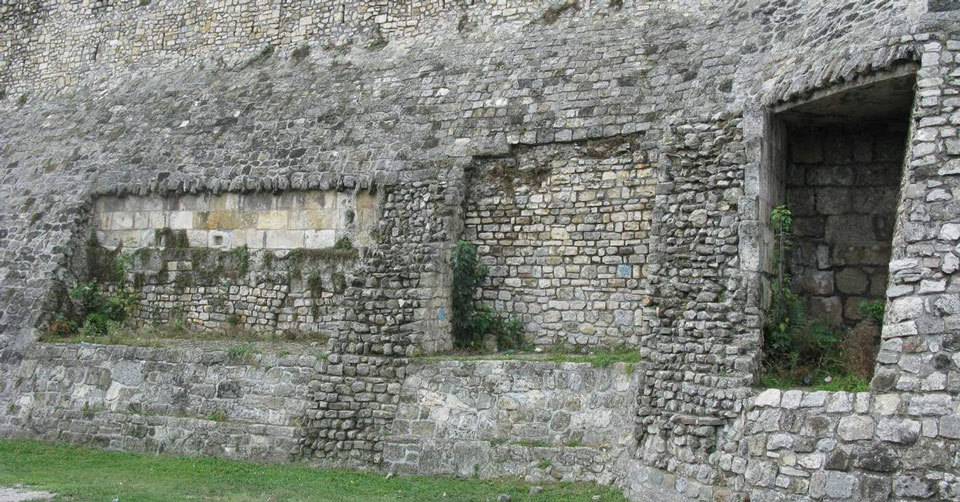
At around 600 B.C. several ancient tribes passed through this region, including the Trach-Kimmer and Skit tribes as well as the Celts in the III century B.C. The origins of Singidunum (Belgrade) are connected to the presence of the Celtic tribe Scordisci. As a fortified settlement Singidunum is first mentioned around the year 279 B.C. The name was coined from the words “Singi” meaning “round” and “dunum” meaning “fortification” or “city”. It is also possible that the name originated from the Trach tribe Singa which happened to be there when the Celts first arrived. There are almost no indications of the existence of this Celtic town other than the several uncovered necropolises in the territories of Karaburma and Rospi cuprija which housed some artistically important items that once belonged to the Scordisci tribe warriors. Significant Celtic cultural influences became tightly woven into the spiritual culture of the denizens of Singidunum. These influences were later partially transferred and assimilated into the Roman ancient cultural elements.
The Romans gained control of Belgrade around the I century A.D. and maintained their grasp on the city over the subsequent four centuries. The soldiers of the Moesian legion were the first Roman military presence in Singidunum. The interesting graves, shaped like wells, which were discovered in the Republic square and other locations around Belgrade come from this period. In addition to Singidunum, the Roman legion also controlled Taurunum which is today known as Zemun. Both cities became significant military outposts in the fortified Roman border – “limesu”.
Singidunum experienced a certain golden age around the year 86 A.D. when the IV Flavia legion arrived. This is when the first stone fortification in the High town was built and its fragments still exist today. This castrum was square-shaped and covered the area of today’s “High town” in Kalemegdan. The appearance of Taurunum (Zemun) from that time is less known, but it is theorized that it was located in the area of today’s “Lower town”. As a significant Roman outpost, Singidunum gained the rights of a city in the II century A.D., during the rule of King Hadrian. Its military importance became even higher in the III century when King Aurelius left Dachia and the Upper Moesia gained new borders along the right bank of Danube. This is when Singidunum was the center of the Christian episcopate. A while later it also became the birthplace of the Roman emperor Jovian Flavius Claudius.
The Romans settled their Legions’ veterans alongside their military camps in order to secure their borders even more. Eventually this led to them forming a fairly large settlement in this location, with straight borders and streets which intersect at 90 degree angles. Some traces of these foundations remain today, best seen in the positioning of the streets such as Uzun Mirkova, Dusanova and Kralja Petra I. This type of rectangular shape is also seen in the Student square where an ancient Roman forum with terms was discovered around 30 years ago.
Between Singidunum and Taurunum across Sava there was a bridge which joined these two cities and acted as one of the most significant Roman roads. This is how Singidunum became a significant crossroads for Roman settlements Moesia, Dachia, Panonia and Dalmatia. The military road – Via militaries – which led from West to East, through Sirmium (today’s Sremska Mitrovica), SIngidunum and Vivinacium (Kistolac) to Byzantium was protected by forts. These forts also existed in today’s Belgrade and included “Mutatio ad Sehtum” (Mali Mokri Lug), Castra Tricornia (Ritopek), Mutatio ad Sehtum Militare (Grocka) among many others. Another significant road was the one connecting today’s mining settlements in Avala, Kosmaj and Rudnik. Many significant traces of material culture (grave-sites, monuments, sculptures, ceramics and coins) were recovered in various villages around Belgrade.
After the Roman empire split into the East and West in the year 395 the Singidunum of that time became a border city held by Byzantium. This new status determined the city’s fate, turning it not only into a melting pot of different cultural influences but also an important traffic point and the strategic key to the Byzantium empire.




 5 ℃
5 ℃



